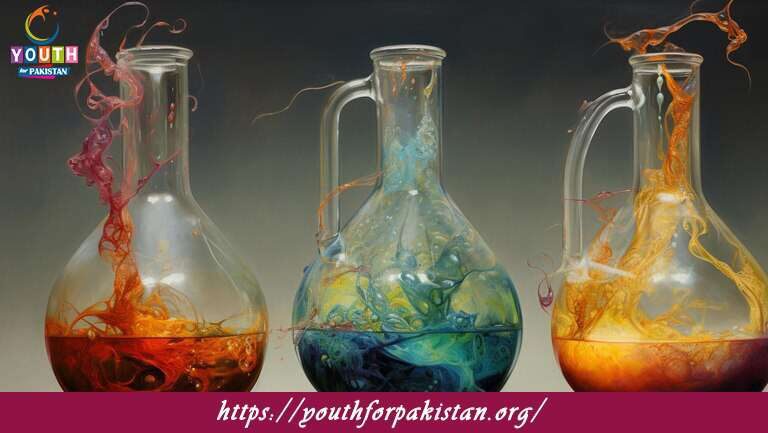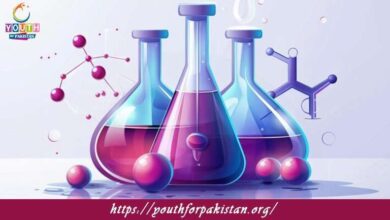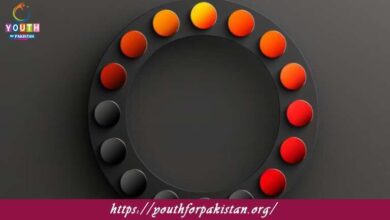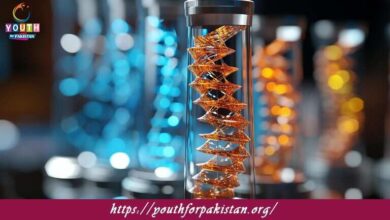11th Class Chemistry Chapter 8 Quiz with Answers

“11th Class Chemistry Chapter 8 Quiz: Chemical Equilibrium” is one of the fundamental chapters that explains how the forward and reverse reactions are balanced in a chemical system. This concept is very important for MDCAT students because, in both chemistry and biology, chemical equilibrium is crucial for understanding dynamic processes. Our MDCAT Quiz for this chapter will help you assess your understanding of the principles of equilibrium and prepare for MDCAT-related questions.
The chapter introduces the aspect of chemical equilibrium, where the rates of the forward and reverse reactions are equal, which therefore brings no net change in the concentrations of reactants and products. Students will learn that the reactions at equilibrium are dynamic; the reactions do not stop, yet there is no overall change in the system. The chapter proceeds to explain the equilibrium constant, K, as a value that quantifies the ratio of the concentrations of the products to the reactants at the state of equilibrium for any particular reaction at a definite temperature. The equilibrium constant is one of the key ideas for understanding where the position of equilibrium lies, whether it favors the products or reactants.
The next chapter, on Le Chatelier’s Principle, explains that when a system at equilibrium is subjected to a change in concentration, pressure, or temperature, the system will adjust by countering the change to restore equilibrium. Students will learn how concentration, temperature, and pressure changes affect the position of equilibrium. For instance, if the concentration of reactants is increased or that of products decreased, the equilibrium will shift toward the formation of products. It also explains the effect of temperature on equilibrium, where increasing the temperature shifts the equilibrium of an endothermic reaction to the right, and for an exothermic reaction, it shifts to the left. Equilibrium in gaseous systems is explained with the concept of partial pressures, and the use of the ideal gas law in calculating equilibrium is also treated.
MDCAT Quiz: Test Your Knowledge of Chemical Equilibrium
Our MDCAT Quiz for Chapter 8 challenges students with questions on chemical equilibrium, equilibrium constants (K), Le Chatelier’s Principle, partial pressures in gaseous equilibrium, and equilibrium in acids and bases. This quiz will help reinforce your understanding of equilibrium principles and prepare you for MDCAT exam questions related to dynamic chemical systems.
- Test Name: 11th Class Chemistry Chapter 8 Quiz
- Type: Quiz Test
- Total Questions: 30
- Total Marks: 30
- Time: 30 minutes
Note: Answer of the questions will change randomly each time you start the test, once you are finished, click the View Results button.
Free Flashcards for Chemical Equilibrium
Enhance your revision with free flashcards for Chapter 8. These flashcards cover important topics such as Le Chatelier’s Principle, equilibrium constant (K), acid-base equilibrium, and the Henderson-Hasselbalch equation. Flashcards are a great way to quickly revise, ensuring that you are well-prepared for MDCAT exam questions on chemical equilibrium.

What is the constant that relates the concentrations of reactants and products at equilibrium?
Equilibrium constant

What is the condition where the concentrations of reactants and products are continuously changing over time?
Non-equilibrium

What is the process by which a system at equilibrium responds to a disturbance to reestablish equilibrium?
Le Chatelier's principle

What is the value of the equilibrium constant for a reaction where reactants are favored?
Less than 1

What is the value of the equilibrium constant for a reaction where reactants are favored?
Less than 1

What is the value of the equilibrium constant for a reaction where products are favored?
Greater than 1

What is the value obtained when the concentrations of reactants and products are substituted into the equilibrium expression?
Equilibrium constant

What is the condition where the concentrations of reactants and products are changing, but the ratio remains constant?
Dynamic equilibrium

What is the condition where the rates of the forward and reverse reactions are not equal?
Non-equilibrium

What is the process by which a system at equilibrium responds to a disturbance to reestablish equilibrium?
Le Chatelier's principle

What is the principle that states that a system at equilibrium will adjust to counteract any change in conditions?
Le Chatelier's principle

What is the term for the ratio of product concentrations to reactant concentrations at equilibrium?
Equilibrium constant

What is the condition where the concentrations of reactants and products remain constant over time?
Chemical equilibrium

What is the constant that relates the concentrations of reactants and products at equilibrium?
Equilibrium constant

What is the expression that relates the concentrations of reactants and products at equilibrium?
Equilibrium constant

What is the condition where the concentrations of reactants and products are continuously changing over time?
Non-equilibrium

What is the condition where the concentrations of reactants and products are not changing over time?
Chemical equilibrium

What is the condition where the rate of the forward reaction equals the rate of the reverse reaction?
Equilibrium

What is the value of the equilibrium constant for a reaction where reactants are favored?
Less than 1

What is the value of the equilibrium constant for a reaction where products are favored?
Greater than 1

What is the symbol used to represent a system at equilibrium in a chemical equation?
⇌ (double arrow)

What is the condition where the concentrations of reactants and products are changing, but the ratio remains constant?
Dynamic equilibrium

What is the expression that represents the relationship between the concentrations of reactants and products at equilibrium?
Equilibrium constant

What is the condition where the rates of the forward and reverse reactions are not equal?
Non-equilibrium

What is the condition where the concentrations of reactants and products are continuously changing over time?
Non-equilibrium
Experience the real exam environment with our expertly designed collection of over 25,000 MCQs MDCAT Mock Tests.





